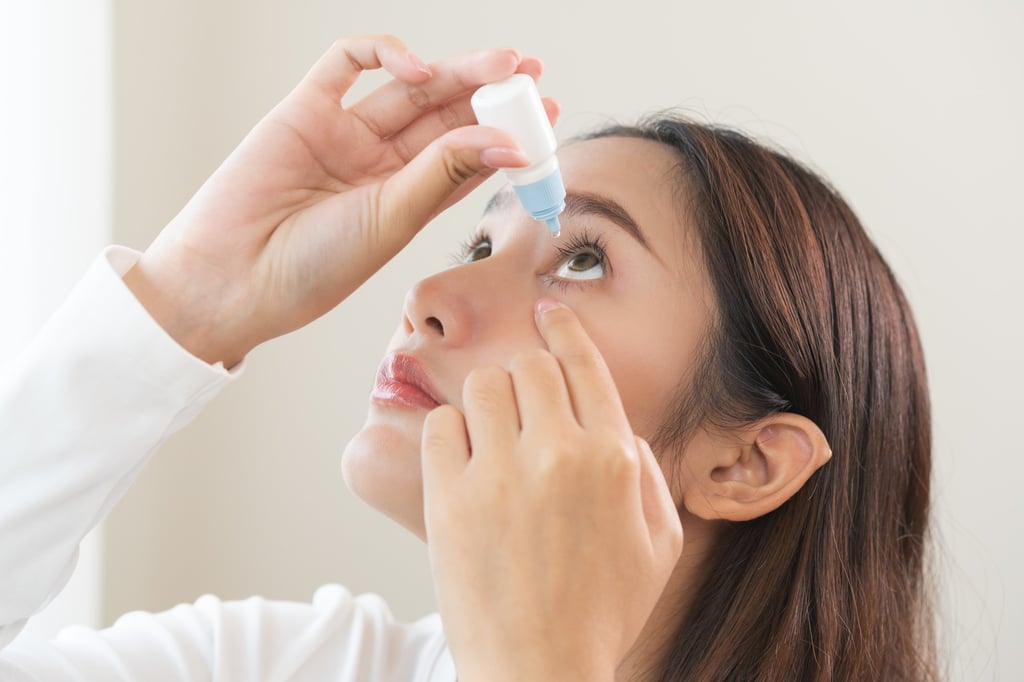Is laughter the best medicine for dry eye disease?
In a study into dry eye disease, Chinese and British researchers find that laughter therapy was as effective as eye drops
South China Morning Post
Published: 16 Sep 2024

Photo: South China Morning Post
Laughter may be as effective as eye drops for people who suffer from dry eye disease, according to scientists in China and Britain, with the therapy offering a cheaper treatment for the condition.
Affecting around 360 million people globally, the chronic eye condition is becoming more prevalent due to an ageing population, air pollution and increased screen time.
Typically, artificial tears are used to alleviate the discomfort from dry eyes and stabilise tear film (the three layers that make up tears), with 0.1 per cent sodium hyaluronic acid one of the most commonly used artificial tears, according to the research team from Sun Yat-sen University, Xiamen University and Queen’s University Belfast.
“Dry eye disease is a chronic condition worldwide linked with psychological stress and poses an economic burden of long-term use of artificial tears,” the researchers wrote in a paper published in peer-reviewed journal The BMJ on Wednesday.
But instead of reaching for the eye drops, sufferers may simply need to have a good laugh, according to the researchers.
Laughter therapy or exercise is already used to reduce symptoms associated with mental health conditions. Now the team has suggested it could be a cheaper and more environmentally friendly treatment for dry eye disease in patients with limited corneal abrasions.
“In this study, we conducted a randomised trial to compare the effectiveness of laughter exercise versus artificial tears in treating symptomatic dry eye disease,” the team said.
This study was a non-inferiority trial, which aims to see if a new treatment is not worse than the active treatment it is being compared to.
Nearly 300 participants with symptomatic dry eye disease were randomly divided into two groups, with one group taking part in laughter therapy and the other group applying eye drops. Both groups undertook their therapy four times a day for eight weeks.

“The laughter exercise group viewed an instructional video and participants were requested to vocalise the phrases, ‘Hee hee hee, hah hah hah, cheese cheese cheese, cheek cheek cheek, hah hah hah, hah hah hah,’ 30 times per five-minute session,” the researchers wrote.
“To standardise the laughter exercise and enhance facial movements throughout the session, participants used a face recognition application on their mobile devices that had been designed by authors, named ‘laughing face’, at the start of each session.”
The main measurement outcome was a mean change in ocular surface disease index, a validated questionnaire tool for assessing dry eye disease.
The researchers also measured secondary outcomes, including the time it took for the first dry spot to appear on the cornea after a blink, and the function of the meibomian oil gland, which prevents tears from evaporating too quickly.
The results of the study found that laughter exercise was “non-inferior” to eye drops in alleviating dry eye disease symptoms.
“Additionally, we found that laughter exercise appeared to improve tear film stability and the meibomian gland function,” the researchers said.
“These benefits persisted for at least four weeks after discontinuation of the exercise,” they said. “Such lasting efficacy was not noted in [the] 0.1 per cent sodium hyaluronic acid group.”
While the specific biological mechanisms require further study, the researchers said the involvement of muscles and nerves during laughter could stimulate tear secretion. Laughter could also improve mental health, which has been linked to the incidence of dry eye disease.
“As a safe, environmentally friendly and low-cost intervention, laughter exercise could serve as a first-line, home-based treatment for people with symptomatic dry eye disease and limited corneal staining,” the team wrote.
- By Victoria Bela/SCMP

